This aero kit and Saucer wheels on the Honda City was developed in the early 1980s by a tuning shop called Motor Sports Meiju in the Kyoto prefecture in Japan. 40 years onwards, it looks strange and heavily dated. It looks crude and this is not how Aero evolved over the past 40 years. So what is it and who is this Keiji dude sitting with a wheel in his lap?
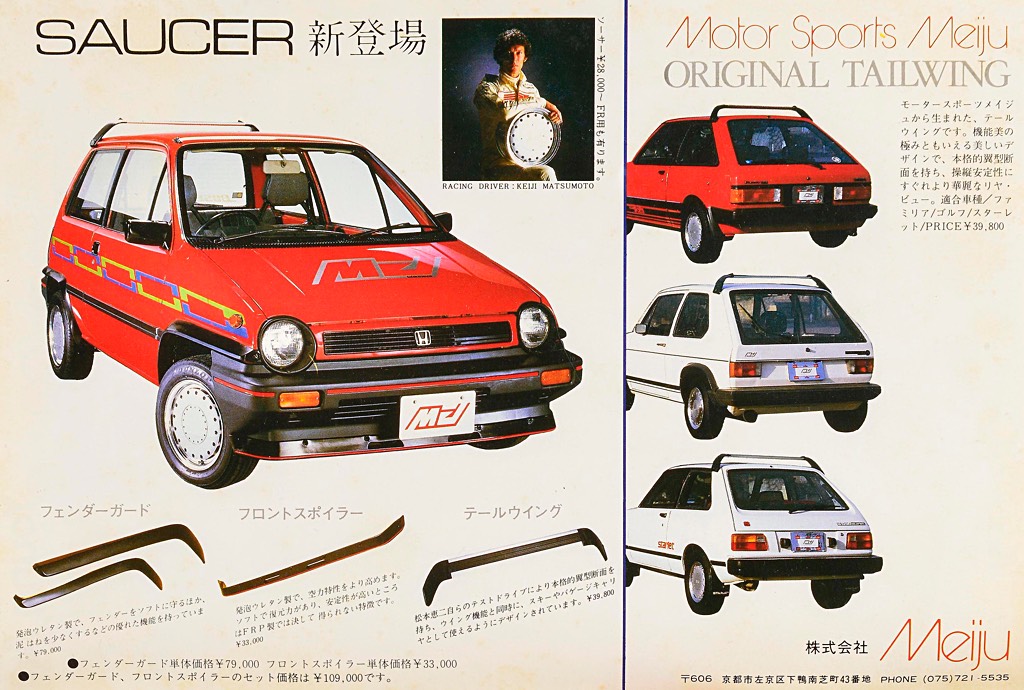
Motor Sports Meiju history
I guess I first have to explain what Motor Sports Meiju is. It all begins with the late racing driver Keiji Matsumoto (松本恵二). Matsumoto started his career in 1968 when he bought a used Toyota Corolla and, unbeknownst to his parents, he stripped off all unnecessary accessories and started practising on Suzuka Circuit and the Higashiyama route near his hometown of Kyoto. He debuted in 1969 in the T-1 class and worked his way up via FJ1300 to F2000, a precursor to the F2 class in 1976. In 1979 he managed to win the, by now renamed, F2 class. Shortly after this, he started his own tuning shop called Motor Sports Meiju. Matsumoto is a very well-known Japanese racing driver and featured in many Cabin Spirit ads.
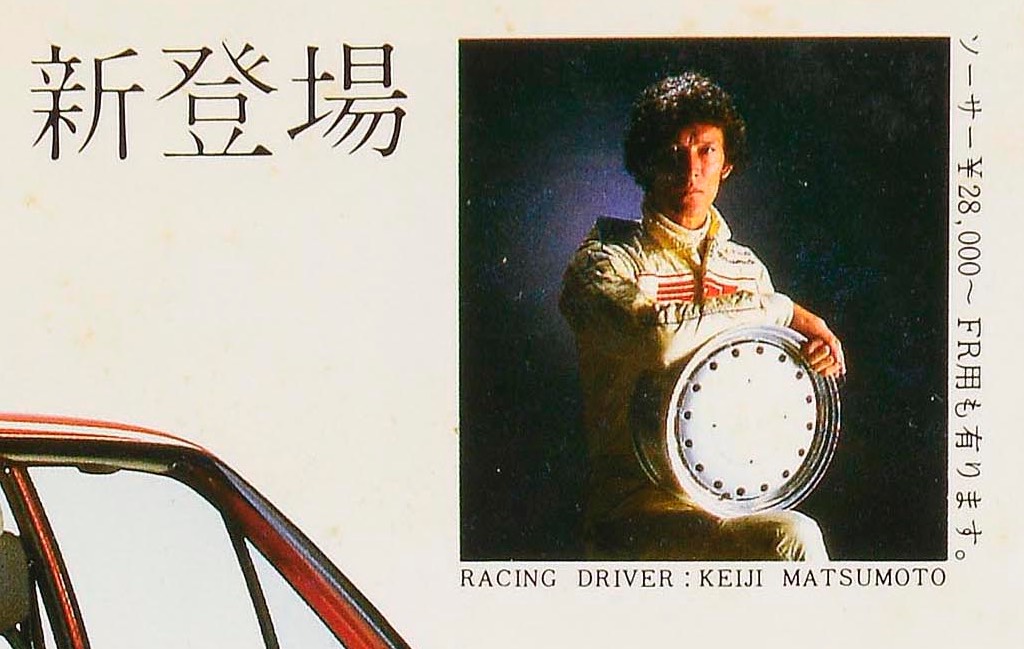
Meiju Saucer wheel
His tuning shop Motor Sports Meiju started selling various Areo parts and also alloy wheels called the Saucer. The Saucer was available mainly in 4×114.3 in many sizes, but also in some other sizes like the VW Golf I. The Saucer featured an early Fan design, sucking in more air and pushing this towards the brakes.
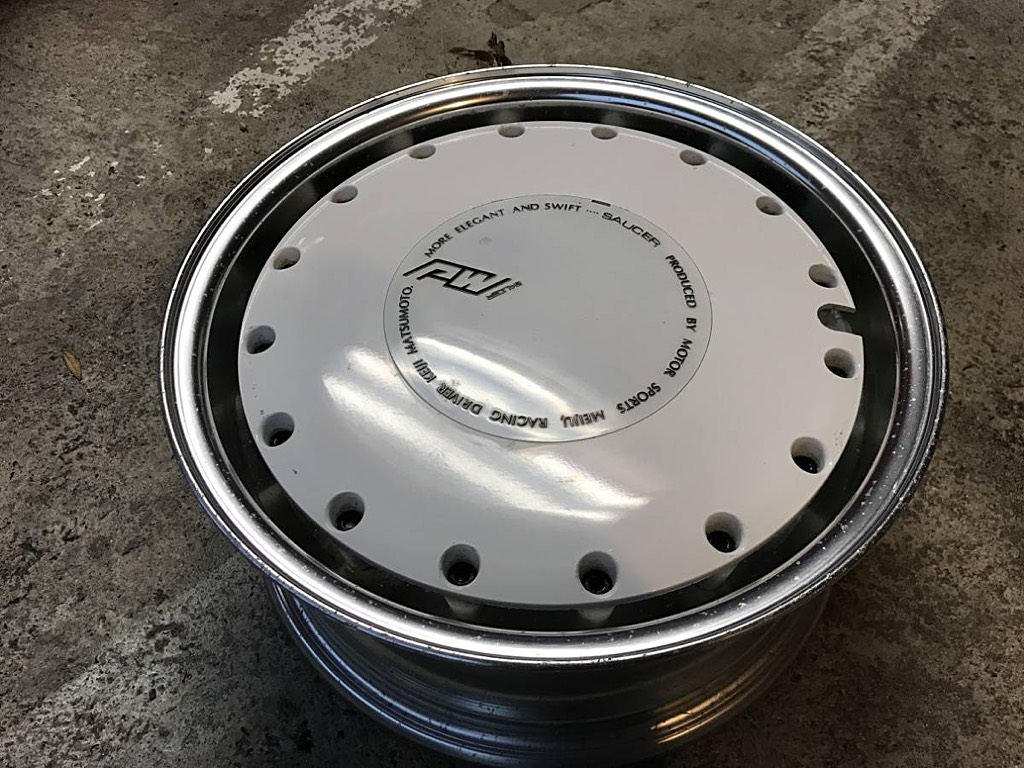
In case you are curious, the text on the centre caps read “Produced by Motor Sports Meiju Racing Driver Keiji Matsumoto. More Elegant and Swift… Saucer.”.
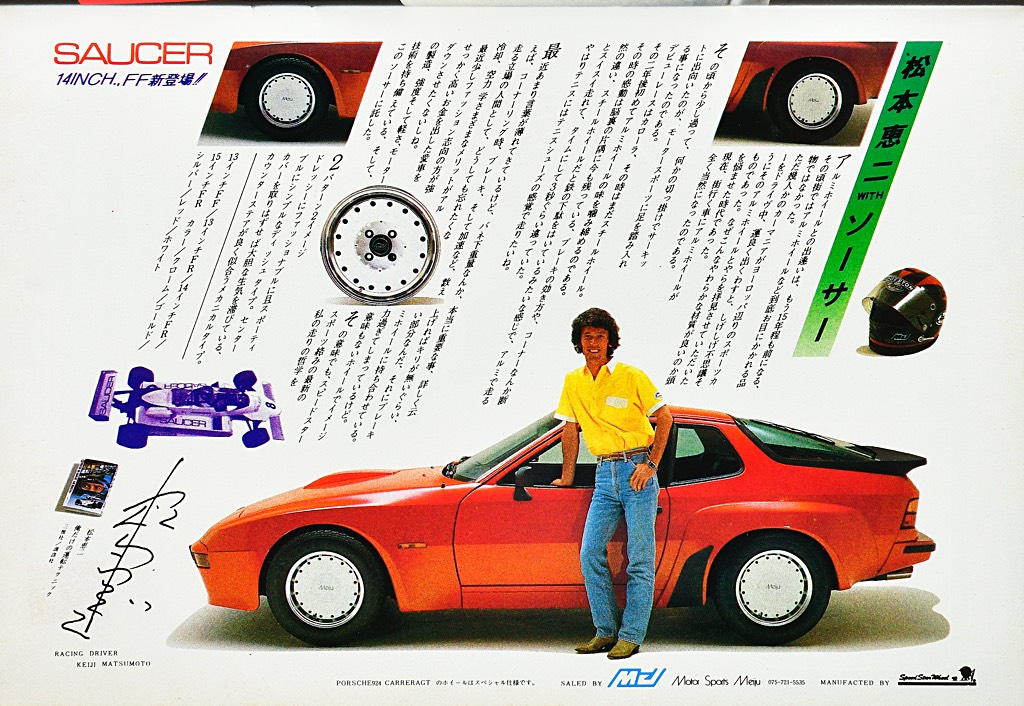
I also found another ad featuring the Meiju Saucer wheel. The text is pretty long and it features Matsumoto’s personal story on driving with alloy wheels for the very first time. Apart from that it mentions the new FF variant of the wheel, targeting newer front-wheeld-drive vehicles and also the availability in both 13-inch and 15-inch wheel sizes. It also mentions you can detach the centre and then have dished wheels. However, my best guess is that this is about removing the centre caps and not the fan.
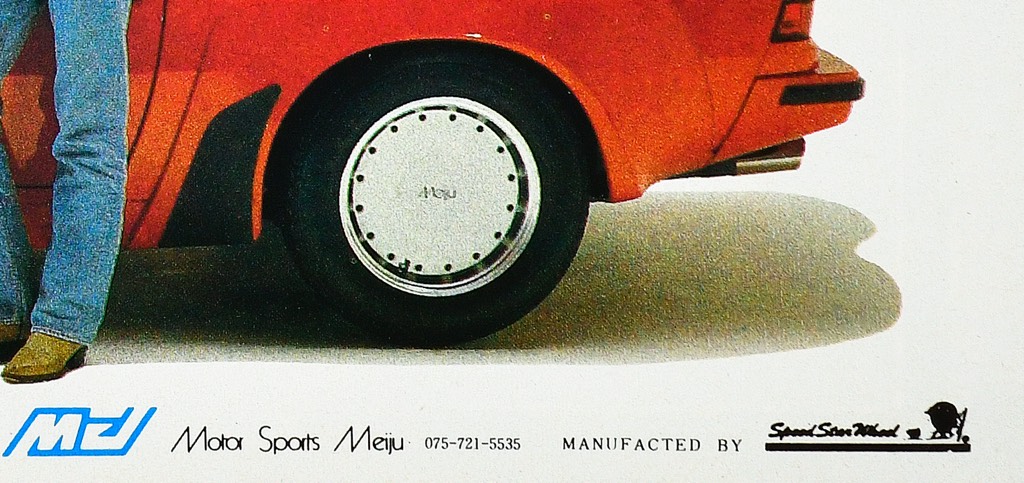
The Meiju Saucer was actually manufactured by SSR, but it is believed that Matsumoto had a big hand in the design of the Saucer.
Formula 2 derived Aero

The Areo now makes a bit more sense: if this was derived from Formula 2 cars, it certainly looks like the crude yet effective Aero we could find on late 1970s Formula cars.

Especially the fender guards on the Honda City are interesting. As the magazine ad dates from 1983, these guards were created well before the Honda City Turbo II Bulldog design. So perhaps Honda took inspiration from Meiju’s design and applied this to the facelifted cars?
According to the ad, the fender guards would have cost 79,000 yen (500 dollars), which is about 100,000 yen (almost 700 dollars) when adjusted for inflation since 1983. The front spoiler would have cost 33,000 yen (43,000 yen adjusted for inflation), but when combined with the fender guards the set would have cost 109,000 yen (142,000 yen adjusted / 950 dollars). That sounds like to good deal to me!
Shopping trolley tail wing?

The weird tail wing is a whole different story. This was apparently designed and tested by Keiji Matsumoto. Design-wise it reminds me of the generic factory roof racks that were commonly installed on early 2000s French cars like the Peugeot 407 wagon or the Peugeot 807/Citroën C8/Fiat Ulysse/Lancia Phedra. The idea was that when unused both roof racks would be mounted to the rear of the car, which made it generally look like a shopping trolley. It may actually be a very efficient design, but I simply can’t get this picture out of my head. Anyway, I digress…
The description of the tail wing describes it to be born from Motorsport Mages. I would assume this is a translation error or artifact. However, it describes the tail wing to be an authentic airfoil cross section and therefore giving excellent handling and stability. The wing would have set you back 39,900 yen (52,200 yen adjusted / 350 dollars) which is a small fee for a proven design.
Conclusion
Even though Matsumoto’s died in 2015, Motor Sports Meiju is still active as a racing company. No longer do they push the boundaries of Formula 2 or Group C, like they did in 1980s. However, they are still active and succesful in the Japanese kart series. Perhaps a follow up post about this unsung hero (at least here in the west) might be at its place?
Both ads via Ossan Auto

Leave a Reply